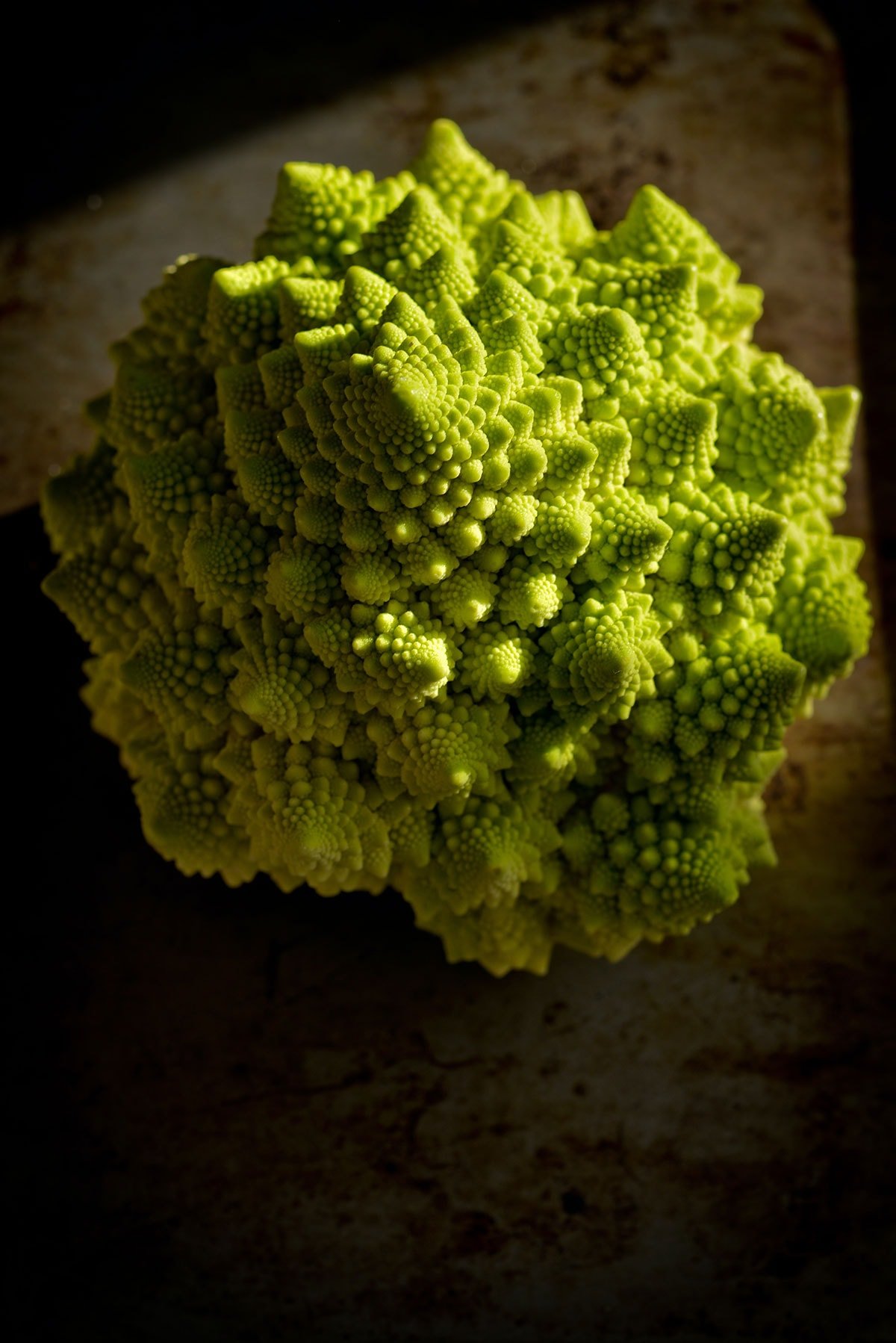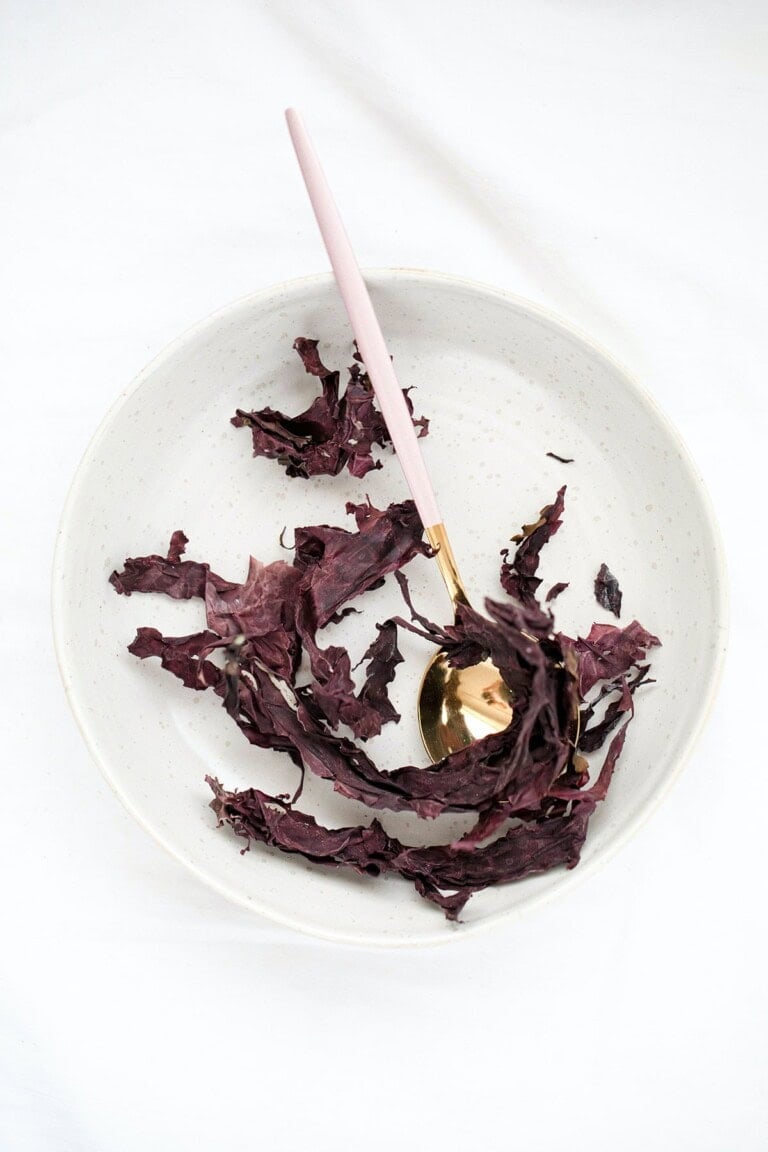Types of Cauliflower You Need to Try
White cauliflower is the common type of cauliflower that most people know, but did you know there are other types of cauliflower, including orange, purple, and even green? That’s right! In this article, we will explore the different types of cauliflower, including their nutritional value and culinary advantages, including how you can incorporate them into your meals.
See also Cauliflower Benefits and Nutrition and How to Freeze Cauliflower?

What is A Cauliflower?
Cauliflower is a versatile and nutritious vegetable belonging to the cruciferous family, which includes Kale, broccoli, and Brussels sprouts. The vegetable is popularly known for its mild flavor and can be eaten raw or cooked in various ways, including roasting, steaming, and mashing or pureeing.
Additionally, Cauliflower is a low-calorie, low-carbohydrate food making it an excellent alternative to starchy foods such as rice and potatoes.
Notably, Cauliflower has been ranked as the 24th most nutritious vegetable according to the Centers for Disease Control and Prevention (CDC)
Types of Cauliflower
1. White Cauliflower
White Cauliflower, also known as “regular cauliflower,” is identified by its large, tight curd, surrounded by thick green leaves. Typically, it is low in calories but a good source of Vitamin C, Vitamin K, and Fiber.
Furthermore, white Cauliflower contains small amounts of other essential vitamins and minerals such as folate, potassium, and vitamin B6. Generally, you can consume the vegetable raw or cooked or use it in various dishes such as soups, salads, and casseroles.
You can also mash or purée white Cauliflower for a low-carb alternative to mashed potatoes. Alternatively, you can prepare the vegetable in various ways, such as steaming, sautéing, stir-frying, roasting, or grilling, and pair it with flavors such as vegan cheese, butter, herbs, spices, and dressings.
2. Orange Cauliflower
Orange Cauliflower, also called “cheddar cauliflower,” is a type of Cauliflower distinguished by its vivid orange color. This color is due to the presence of beta-carotene, a pigment naturally found in fruits such as oranges and vegetables such as carrots and sweet potatoes. Orange Cauliflower is similar in nutritional value to white Cauliflower; however, the orange one is an excellent source of Vitamin A, which is beneficial for healthy vision and the immune system.
Additionally, the vegetable tastes slightly sweeter and nuttier than white Cauliflower. This makes the vegetable a preferred choice for those that are familiar, especially when mashed, roasted, and steamed.
3. Green Cauliflower
Green Cauliflower, also known as “broccoli cauliflower” or “broccoflower,” is a hybrid of Cauliflower and broccoli known for its green color due to the presence of chlorophyll. It has a slightly nuttier, sweeter, but mild flavor and it’s firmer in texture than the traditional cauliflower. This causes it to hold well in various cooking.
The vegetable is also low in calories and high in dietary fiber. It is also packed with nutrients and vitamins, such as vitamin C, vitamin K, and vitamin A, as well as antioxidants and phytochemicals. The vegetable can be eaten raw or cooked or used in various dishes such as soups, stir-fries, and casseroles.
4. Purple Cauliflower
This type of Cauliflower is known for its deep purple color and has a mild, nutty flavor. It contains high levels of antioxidants and is exceptionally high in anthocyanins, known for their anti-inflammatory properties.
Purple Cauliflower is also a good source of vitamins C, K, and fiber. Additionally, the vegetable contains small amounts of other essential vitamins and minerals such as potassium and vitamin B6.
5. Romanesco cauliflower
Romanesco, also known as Roman Cauliflower or Romanesco broccoli, is a naturally occurring variety of Cauliflower believed to have originated in Italy. Particularly, the vegetable is known for its unique, spiraled florets with a lime-green color and has a nutty, slightly sweet flavor when cooked or eaten raw.
Additionally, Romanesco cauliflower is often used as a decorative or garnishing vegetable due to its striking appearance.
The Top 6 Health Benefits of Cauliflower
Cauliflower contains unique plant compounds that may reduce the risk of several diseases, including heart disease and cancer. Additionally, it’s weight loss friendly and easy to incorporate into your diet. Below are the 6 Science-based health benefits of Cauliflower.
It may help reduce the risk of cancer
Like other cruciferous vegetables such as broccoli, Kale, and Brussels sprouts, Cauliflower contains compounds called glucosinolates that may help reduce cancer risk.
Generally, chopping or chewing Cauliflower causes the glucosinolates contained in the vegetable to be converted into biologically active compounds. These compounds include indoles, isothiocyanates, and nitriles, which studies have shown to have anti-cancer properties.
Additionally, these compounds can help to detoxify and eliminate potential cancer-causing substances from the body while inhibiting the growth and spread of cancer cells. Cauliflower is also a good source of additional nutrients such as vitamin C and fiber that have cancer-protective effects.
It may boost heart health
Cauliflower is a good source of dietary fiber, which studies have shown is beneficial in regulating cholesterol levels and reducing the risk of heart disease.
Fiber helps lower bad cholesterol in the blood, which can otherwise increase the risk of arteriosclerosis. This is a buildup of cholesterol and other substances within the arterial wall causing obstruction to blood flow. When this obstruction occurs in the arteries close to your heart, you may develop coronary artery disease. Coronary artery disease may also lead to angina, heart attack, or heart failure.
Additionally, the vegetable contains compounds such as sulforaphane, which possess anti-inflammatory and antioxidant properties that may help to protect the heart.
Also, cauliflower is high in potassium, which is essential in lowering blood pressure and improving heart health.
Aids in digestion
As a good source of Fiber, Cauliflower can help promote regular bowel movements and prevent constipation.
Moreover, fiber helps to add bulk to the stool, making it softer and easier to pass. The high water content in Cauliflower also helps to keep the digestive tract hydrated, thus preventing constipation and other digestive problems.
Cauliflower is also rich in antioxidants and anti-inflammatory compounds, essential in reducing gut inflammation and protecting the gut lining. This may be particularly beneficial for people with inflammatory bowel disease (IBD) or irritable bowel syndrome (IBS).
Strengthening bones
The nutrients in Cauliflower, such as vitamin K plays a vital role in bone health. Generally, Vitamin K helps to activate a protein called osteocalcin, which is responsible for binding calcium to the bones, which helps increase bone density. As such, adequate Vitamin K intake can help reduce the risk of osteoporosis, a common condition in old age characterized by weak and brittle bones.
Also, Cauliflower is a good source of vitamin C, essential for collagen production, which keeps the bones strong and flexible. Additionally, it contains small amounts of minerals such as Phosphorus, magnesium, and calcium, which studies have shown to be essential for bone health.
Regulate blood sugar levels
Since Cauliflower is a low-carbohydrate vegetable, it also has a low glycemic index (GI) value. Studies have shown that foods with a low GI value are less likely to cause rapid blood sugar spikes after eating. This can be beneficial, especially for people with diabetes or at risk of developing diabetes.
It’s high in Choline
Choline is an essential nutrient needed to produce neurotransmitters, which are chemical messengers in the brain. For instance, it’s a precursor for acetylcholine, a neurotransmitter that plays a role in learning, attention, memory, involuntary muscle movement, and arousal.
Low levels of acetylcholine have been associated with myasthenia gravis (a condition associated with muscle weakness) and Alzheimer’s disease.
Choline has also been shown to prevent cholesterol accumulation in the liver. Without Choline, too much cholesterol and fat will build up in your liver, causing liver damage and disease, including non-alcoholic fatty liver disease. Choline can even lessen the severity of existing liver disease.
Additionally, Choline can help fight against inflammation. According to a clinical study published in the American journal of clinical nutrition, participants with higher levels of Choline had lower inflammatory markers such as C-reactive protein (CRP). The liver usually produces CRP in response to inflammation. So when your levels are low, it means there’s no active inflammation going on.
Maintains brain health
Cauliflower is rich in antioxidants, such as vitamin C and beta-carotene, which research has shown are essential in protecting the brain from damage caused by free radicals.
Besides, the high choline levels in cauliflower are essential for brain development and function.
Also, cauliflower contains glucosinolates, which possess anti-inflammatory and antioxidant properties. Research has shown that these properties aid in protecting the brain from damage and inflammation associated with cognitive decline and neurodegenerative disorders such as Alzheimer’s disease.
Cauliflower recipes to try at home
Cauliflower rice
- Cauliflower rice is a common recipe that’s also easy to make. Besides, it’s a grain-free, low-carb alternative to white rice.
- To make cauliflower rice, finely chop it by pulsing it in a food processor or using a grater.
- You can also buy pre-made cauliflower rice, but making yours from home is always best.
- Cauliflower can be plain when taken on its own. However, tossing it with garlic butter can add to its natural, nutty, sweet flavor.
- To make your rice, heat a wide skillet and melt some vegan butter. Stir in the rice and let it cook, often stirring, so it cooks evenly. When it starts to pick color and is tender, add in fresh herbs, some lemon juice, pepper, and salt to taste. You can also throw in some toasted nuts for an extra crunch.
Mashed cauliflower
Cauliflower mash is another great alternative to regular potato mash. It’s a perfect side dish that you can put together with only a few ingredients.
Moreover, it can be just as creamy and tasty as your favorite mashed potato recipe but more nutrient-dense and with fewer carbs and calories.
- To make mashed cauliflower, boil your cauliflower for about ten minutes or until tender. You can pierce with a fork to tell whether it’s done.
- Drain out the water and let it sit while covered for about 2-3 minutes. This will cause the cauliflower to continue steaming and reabsorb any extra moisture. Otherwise, your mash will turn out watery.
- Some people may prefer to use cauliflower rice, but again if not careful, the mash can easily become watery.
- When your three minutes are over, use a potato masher but for the creamiest result, use a blender or a food processor. I like the texture more when I use a hand masher.
- To spice up your mash, add anything you like with mashed potato. This can include garlic oil, shredded vegan cheese, and your favorite spices.
Cauliflower tortilla
These tortillas are a healthy and delicious wrap option.
- Simply puree cooked cauliflower, mix in some coconut flour to absorb any excess liquid and form a dough, then separate the dough into small balls.
- Take two pieces of parchment paper the size of a large plate, place one dough on one piece of the parchment paper, then place the other piece on top of the dough. Roll out into the size of a regular tortilla
- Remove the paper on top, then slide your hand to pick the tortilla with the parchment paper.
Place the dough side down, so you remain with the paper on top. Cook both sides for about 2 minutes to lightly toast them. - Don’t overcook them as they will become hard and not bend easily
- Eat them immediately with your favorite fillings or store them in an air-tight container for up to 4 days.
Cauliflower hummus
Hummus is a middle-eastern dip, spread, or savory dish traditionally made from cooked and mashed chickpeas, garlic, Tahini, and lemon juice. However, you can trade the chickpeas with any other ingredient, including roasted cauliflower florets.
Besides, this recipe is easy to digest, and its one way to eat more vegetables. You can garnish it with olive oil, paprika, and parsley.
Cauliflower Recipes:
- Jamaican Jerk Cauliflower
- Tofu Curry with Cauliflower
- Cauliflower Tikka Masala
- Cauliflower Fried Rice
Final Thoughts
Cauliflower comes in various varieties, including white, orange, purple, and green. It’s generally a nutritious vegetable that offers a variety of health benefits.
This is because it’s rich in essential vitamins and minerals and contains unique antioxidants that can help reduce inflammation and protect against various diseases.
One of the best things about Cauliflower is that it is easy to incorporate into your diet and can replace various calorie-rich dishes like white rice and mashed potatoes.
If you enjoyed this post about the Types of Cauliflower You Need to Try and would love to see more, join me on Youtube, Instagram, Facebook & Twitter!
Get discounted copies of my cookbook here.
Fortunately, because of the Ads on our website, readers and subscribers of Healthier Steps are sponsoring many underprivileged families.






